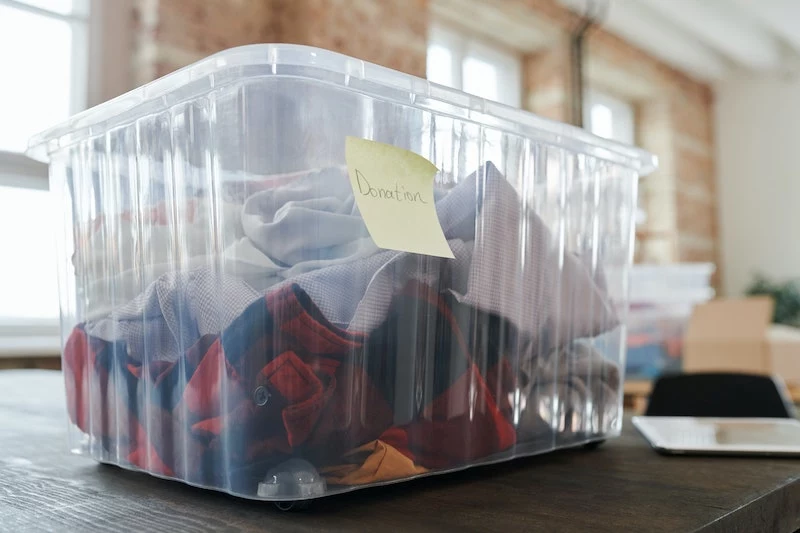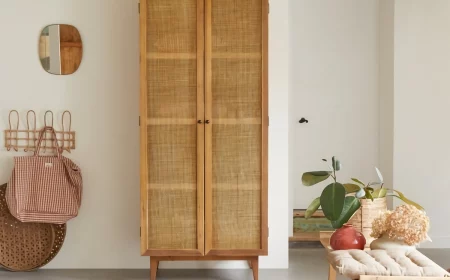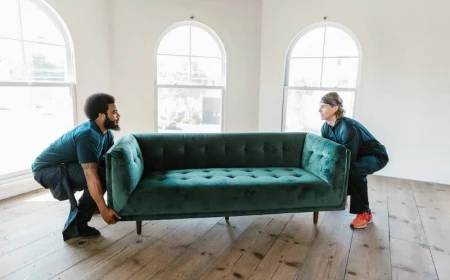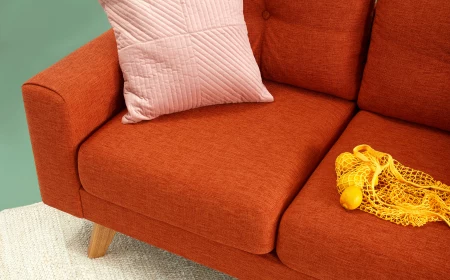Junk or Gem? The Ultimate Guide to Dealing With Old Furniture & Appliances
I’ve spent decades in the world of property management and residential cleanouts, and let me tell you, I’ve seen it all. I’ve hauled away gorgeous, solid-wood dressers left to die on the curb in the rain. I’ve also had to politely decline stained, broken furniture that was more of a hazard than a help. It’s a struggle so many of us face. You want to clear out space, but you also want to do the right thing. The problem? It’s genuinely hard to know what the ‘right thing’ is.
In this article
Tossing something useful feels incredibly wasteful, but donating junk just burdens a charity with your disposal problem. So, this guide is built on all those years of experience. It’s a straightforward system for looking at an old piece of furniture or an appliance and making a clear, responsible call. We’re going way beyond a simple ‘keep or toss’ list to help you clear your home with confidence and a clear conscience.

Step 1: The Pro-Level Inspection
Before you even think about where an item is going, you need to understand exactly what you’re dealing with. This is the simple, hands-on process I use to make sure we don’t make bad calls. You can use the same method to get a true picture of an item’s condition.
Evaluating Furniture: More Than Meets the Eye
When I look at furniture, I’m focused on three things: its bones (structure), its skin (surface), and any hidden dealbreakers. A pretty chair is useless if it’s not safe.
First up is the Structure Test. This is the most important part, honestly. Place the item on a level floor. For chairs, tables, and stands, put your hands on top and give it a firm but gentle rocking, both side-to-side and front-to-back. A tiny bit of movement might just be a loose screw you can tighten in two minutes. But a serious sway, especially with creaking or groaning sounds? That’s a sign of failing joints where the old glue has dried out. Unless it’s a valuable antique, that piece is probably toast.

For dressers and cabinets, open all the doors and drawers. Do they sag? Do they scrape and stick, or do they glide smoothly? This tells you if the main frame is still square. If it’s warped, the whole piece is under stress and on its way to failing completely.
Next, the Surface Inspection. Look past the dust. A light scratch or a white water ring on a solid wood table can often be fixed. By the way, for those white rings, try the ‘mayonnaise trick’—let a small dab sit on the ring for a few hours. It often pulls the moisture right out. However, if you see veneer peeling off in big chunks or deep, dark stains on particleboard, that’s a whole different problem. Once particleboard gets wet, it swells up and crumbles. It looks like a soggy, grainy biscuit, and there’s no fixing it. That’s a direct trip to the dump.

Finally, the Unseen Problems Check. This is where you have to be a detective. First, use your nose. A faint, musty smell might just be from sitting in a basement and can often be fixed. Try cleaning the piece with a 50/50 white vinegar and water solution, then let it air out in the sun for a day. If that powerful mildew or pet urine smell remains, it’s a lost cause. Charities will reject it instantly.
And this is critical: look for pests. Get a flashlight and check every seam, crevice, and corner. I’ll never forget a client who stored a ‘beautiful’ old couch in their garage, only to find out months later it was infested with carpenter ants. The pest control bill was in the thousands. That’s why this check is NOT optional. On upholstered pieces, look for tiny black dots (bed bug droppings) or the casings they shed. On wood, look for tiny, perfectly round holes or a fine, sawdust-like powder underneath called ‘frass.’ That’s a sign of wood-boring bugs. Don’t even think about bringing that into your home or a donation center.

Evaluating Appliances: The Reality Check
Appliances are a different beast. They can be mechanically okay but still be a terrible choice for donation. Your assessment here is all about function, safety, and real-world cost.
Let’s start with the Function Test. Don’t just plug it in to see if the light turns on. For a refrigerator, stick a thermometer inside. Is it holding a food-safe temperature (below 40°F or 4°C) after a few hours? A fridge that runs but doesn’t cool is just an expensive metal box. For a stove, test every single burner and the oven. For a washer, run a short cycle. Listen for loud grinding or banging—those are expensive sounds that usually mean a failing motor.
The Safety Check is completely non-negotiable. Look at the power cord. If it’s frayed, cracked, or has exposed wires, it’s a fire hazard. Full stop. If it’s a gas appliance and you smell even a faint whiff of gas, don’t test it. Just don’t. A faulty appliance needs to be properly disposed of, not passed on.

And here’s the Age and Efficiency Factor. This is where you have to think like the new owner. A 20-year-old fridge might run, but it can use three or four times more electricity than a modern, high-efficiency model. For a family on a tight budget, that ‘free’ fridge could cost them hundreds in extra electricity bills over a year. It’s not a gift; it’s a burden.
Step 2: The Decision: Repair, Donate, or Dispose?
Okay, you’ve done your inspection. Now it’s time to choose a path. Let’s break down your real options.
Path 1: The Repair Route
Is the piece made of solid wood? Does it have sentimental value? Is the fix simple, like a loose leg or a dinged-up finish? If so, repairing it is a fantastic option. For less than $50, you can put together a great little ‘Furniture First-Aid Kit’ at any hardware store.
My go-to kit includes:
- Wood Glue: A good bottle costs about $5-$8 and is essential.
- A Few Clamps: You can get a small set for around $20-$30 to hold joints tight while glue dries.
- An Assorted Screwdriver Set: A must-have for any home, usually $15-$25.
- Sandpaper & a Stain Pen: For touching up minor surface flaws.
For appliances, it’s a tougher call. A service visit alone will likely run you $100 to $150 just for a diagnosis. If the appliance is over 10 years old and needs a major part like a fridge compressor (a $400+ job), it’s almost never worth it. You’re better off putting that money toward a new, efficient model.
Path 2: The Donation Drop-Off
The golden rule of donating is simple: give something you would be happy to receive. If an item is clean, functional, and safe, it’s a great candidate for donation.
But think strategically about where you donate. Places like Habitat for Humanity ReStore are often amazing for taking building materials, cabinets, and working appliances, as they help with home-building projects. Your local Goodwill or thrift shop, on the other hand, is usually more focused on furniture and housewares, and they can be very particular about condition. No rips, major stains, pet hair, or smells.
Path 3: The Final Farewell (Responsible Disposal)
Listen, choosing to dump something is not a failure. It’s the most responsible choice for an item that is broken, unsafe, or infested. Don’t pass that problem on to someone else.
But ‘professional disposal’ sounds complicated. It’s not. Your first move should be to check your local town or city’s waste management website. Many offer one or two free bulk pickup days per year. If that’s not an option, search online for ‘appliance recycling near me’ or ‘junk removal service.’ A quick heads-up: expect to pay a junk hauler between $75 and $125 to take away a single large item like a sofa or fridge.
Oh, and one more pro tip for old fridges and freezers: check with your electric utility! Many have recycling programs and will actually pay you a bounty—sometimes $50 or more—and come pick up the old energy-guzzler for free.
The Takeaway
So there you have it. This isn’t just about getting rid of stuff; it’s about making thoughtful, informed decisions. By taking a few minutes to inspect an item properly, you can avoid feeling guilty about waste and stop worrying about burdening others. You’ll know when a quick fix can save a classic piece, when an item can get a second life through donation, and when it’s time to simply say goodbye. Now you can get to clearing that space with total confidence.










